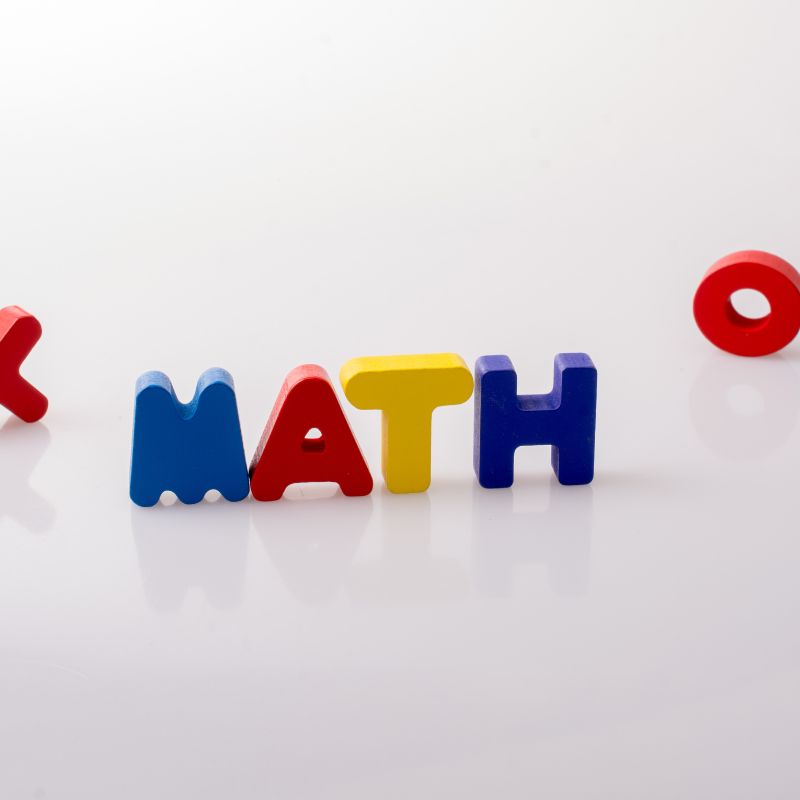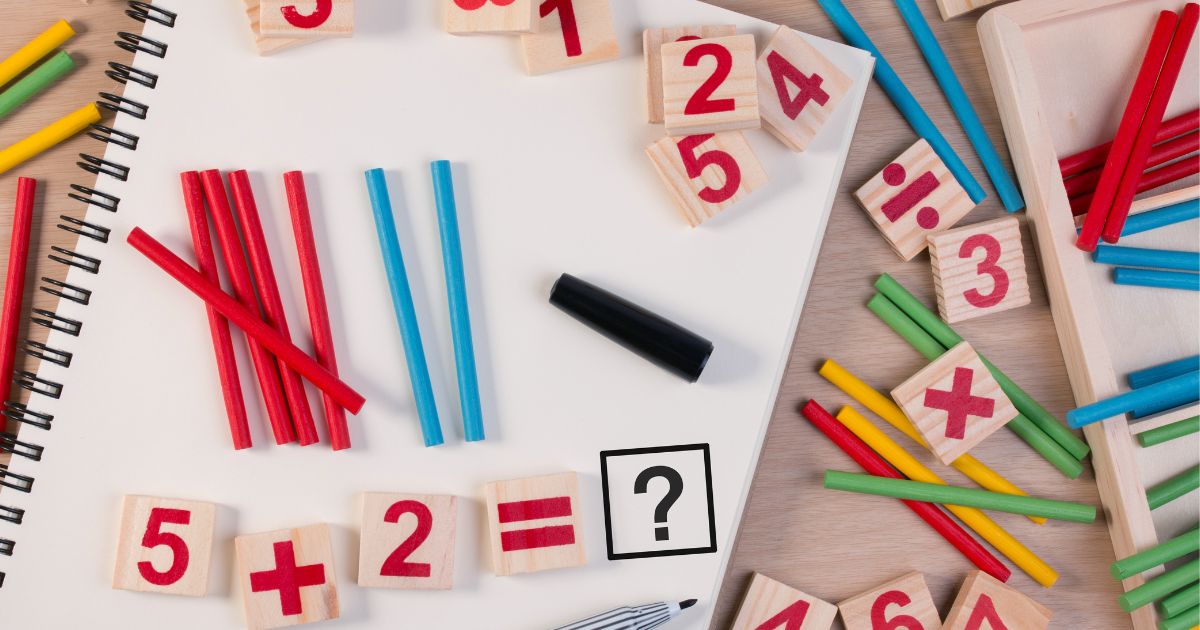
Math Playground – Excellent Games for Kids
Math Playground
Excellent Games for Kids
“Math Playground” refers to a website and educational platform that offers a variety of math games, activities, and resources for students, teachers, and parents. It provides a fun and interactive way for children to practice and improve their math skills. These resources are typical aimed at making math more engage and accessible to young kids who learn.
Math Games
Kid-friendly math games and puzzles that cover a range of topics such as addition, multiplication, division and more.
“Math Games” are games for education designed to help students learn and practice various math concepts and skills while having fun. These games are often used in class rooms and at home to make learning math more to engage and enjoy. Here are some details about math games:
Range of Topics – Math Playground:
Math games include many math topics like adding, subtracting, multi plying, algebra, and more. They can be adjusted for various grades and skill levels.

Interactive and Engaging:
Math games are interactive and typical involve solving math problems or complete math related challenges within a game like environment. This interactive keeps students engaged and motivated.
Variety of Formats:
Math games come in various formats, such as board games, card games, online games, mobile apps, and interactive software. Some are designed for single players, while others can be played by multiple players, making them suitable for both individual and group learning.
Immediate Feedback – Math Playground:
Many math games provide immediate feed back to students. This means that when a student answers a question or complete a task, they receive instant feed back on whether their answer is correct or incorrect. This helps them learn from their mistakes and improve their skills.
Read also – Child development milestones from 3 years to 5 years
Adaptive Learning:
Some math games use adaptive learning algorithm to adjust the difficult level based on the kids performance. This ensures that the game remains challenge but not too difficult, provide an optimal learning experience.
Real-World Applications:
Some math games incorporate real world scenarios and problems, showing students how math is relevant in everyday life. This can help them see the practical applications of the math concepts they are learning.
Motivational Rewards:
Many math games incorporate reward systems, such as earning points, badges, or virtual prizes for complete challenges or reach certain milestones. These rewards can motivate students to continue playing and learning.
Alignment with Curriculum – Math Playground:
Some math games are designed to align with standards and curricula, making them valuable tools for teachers and parents who want to reinforce class room learning.
Accessibility:
With the advent of technology, math games are widely accessible through computers, tablets, and smart phones, making it easy for students to access them from home or school.
Customization – Math Playground:
Some math games allow parents to customize the content and difficult levels to suit the specific needs of individual students.
Math games are an effective way to make math learning more to enjoy and can help students build a strong foundation in math. They can be used as part of a balance education approach to reinforce class room learning or for independent practice. Many websites and apps offer a wide select of math games, catering to various age groups and skill levels.
Interactive Activities
Hands-on activities and simulations that help children understand math concepts through visual and interactive experiences.
Interactive activities are exercises, or experiences that engage kids in a hands on and participatory way to help them understand and apply various concepts or skills. These activities are designed to be more engage and immersive than traditional passive learning methods, such as lectures or reading text books. Here are more details about interactive activities:
Engagement:
Interactive activities are designed to actively involve kids, encouraging them to participate with the content. This active engagement helps maintain the kids interest and attention
Hands-On Learning – Math Playground:
Many interactive activities involve manipulating objects, conducting experiments, or solving problems, allow kids to learn by doing. This hands on approach can improve comprehension and retention.

Visual and Sensory Stimulation:
Interactive activities often incorporate visual aids, multi media elements, and other sensory stimuli to enhance the learning experience. This can make complex or abstract concepts more concrete and easier to understand
Problem-Solving:
Interactive activities frequently present kids with challenges or problems to solve. This encourages critical thinking and problem solving skills.
Collaboration – Math Playground:
Some interactive activities are designed for group work, promote collaboration and communication among kids. Collaborative activities can help kids share ideas, perspectives, and solutions.
Feedback:
Interactive activities often provide immediate feed back to kids. Also this feed back can help kids understand their mistakes and make corrections, promote a deeper understanding of the material.
Real World Applications:
Many interactive activities aim to connect concepts to real world applications. Learners can see how what they are learning can be applied in practical situations.
Customization – Math Playground:
Some interactive activities allow educators to customize the content or parameters to meet the specific needs of kids. So this flexibility can accommodate a range of skill levels and learning styles.
Examples of interactive activities in education include:
- Simulations: Virtual or physical simulations that model real world processes, such as physics simulations, chemistry experiments, or business simulations.
- Hands On Science Experiments: Science experiments conducted in a laboratory setting, allow students to observe and test scientific principles.
- Interactive Math Manipulatives: Digital or physical tools and materials that help students visualize and understand math concepts, like virtual algebra tiles or geometric shapes.
- Role Playing Games (RPGs): Educational RPGs where students take on roles and make decisions to solve problems or explore historical events.
- Virtual Field Trips: Virtual tours or explorations of places, cultures, or historical events that allow students to “visit” locations they might not otherwise have access to.
- Interactive Coding Challenges: Programming challenges and coding exercises that teach programming languages and problem solving skills interactively.
Interactive activities are an effective way to foster active learning, critical thinking, and deeper understanding of subject matter. So they can be used across various educational levels and disciplines to make learning more engage and memorable.
Math Videos
Educational videos and animations that explain math concepts in a simple and engage manner, often featuring colorful graphics and characters.
Math videos are educational videos that focus on teaching math concepts, principles, and problem solving techniques through visual and audio content. Also these videos are created to make math more accessible, engaging, and understandable for kids of all ages. So here are more details about math videos:
Visual Learning Aid – Math Playground:
Math videos use visuals like drawings, pictures, animations, and graphics to explain math ideas. Visuals can simplify tricky concepts and improve understanding.

Demonstration:
Many math videos include step by step demonstrations of math processes. So this can be especially helpful for kids who benefit from seeing how problems are solved.
Concept Explanation – Math Playground:
Math videos typically provide clear and concise explanations of math concepts, often using real world examples or analogies to make the material relatable.
Variety of Topics:
Math videos include various math areas like basic math, algebra, geometry, calculus, statistics, and more. They can also be suitable for different ages and education levels.
Engaging Presenters – Math Playground:
So some math videos feature engage and enthusiastic presenters who explain concepts in an engage and relatable manner, helping to maintain the kids interest.
Problem-Solving:
Math videos often include examples of problem solving techniques, guiding kids through the process of tackling math problems step by step.
Concept Review – Math Playground:
Many math videos are designed to serve as review tools. But kids can revisit specific topics or concepts as needed to reinforce their understanding.
Accessibility:
Math videos are widely available on various platforms, including educational websites, video sharing platforms (e.g., YouTube), and educational apps. So this accessibility allows kids to access math content from anywhere with an internet connection.
Self-Paced Learning:
Math videos are suitable for self paced learning, allow kids to study at their own speed and revisit content as needed.
Supplementary Learning – Math Playground:
Math videos can complement traditional class room instruction, providing additional explanations and examples for students who may need extra help or clarification.
Exam Preparation:
Many math videos offer exam preparation materials, including tutorials on specific topics commonly covered in standardized tests.

Community Resources:
Online communities and forums often discuss and share math videos, helping kids discover additional resources and gain insights into effective learning strategies.
Whether you’re a student looking for extra help with math, a teacher seeking supplementary teaching materials, or a parent supporting your child’s math education, math videos can be valuable tools. Also they provide an interactive and visual approach to learning math, making it more accessible and engage for a wide range of kids.
Math Challenges – Math Playground
Brain teasers, riddles, and math challenges that encourage critical thinking and problem solving skills in children.
Problem Variety:
Math challenges come in various forms and difficulty levels. Also they can involve arithmetic, algebra, geometry, number theory, logic, and more. So the diversity of problems ensures that there is something suitable for kids of different ages and skill levels.
Math challenges are engage and thought provoking problems or puzzles that require math thinking and problem solving skills to solve. Also these challenges are often used as educational tools to help students develop critical thinking, logical reasoning, and math proficiency. So here are more details about math challenges:
Critical Thinking – Math Playground:
Math challenges are designed to stimulate critical thinking and creativity. So they often require kids to approach problems from different angles, consider alternative solutions, and use logical reasoning.
Real-World Applications:
Some math challenges are inspired by real world problems or scenarios, helping kids understand the practical applications of math.
Read also – Best Toddler Parenting Advice – More Effective Parenting
Puzzles and Riddles:
Math challenges can be presented as puzzles, riddles, or brain teasers. Also these types of challenges encourage kids to think outside the box and find creative solutions.
Competitions – Math Playground:
Many math challenges are used in math competitions and Olympiads at various levels, from local to international. Also these competitions can motivate students to excel in math and show case their problem solving skills.
Educational Tools:
Math challenges are commonly used by teachers to supplement class room instruction. So they can be incorporated into lesson plans to reinforce specific math concepts.
Self Paced Learning – Math Playground:
Math challenges can be under taken at one’s own pace. Also kids can work on them individually or as part of a group, allow for flexibility in learning.
Online Resources:
There are many websites, forums, and online communities dedicated to sharing math challenges. Also these platforms provide a wealth of math problems and solutions for kids and educators.
Feedback and Solutions:
Many math challenges provide solutions or explanations after the problem, allowing kids to verify their answers and learn from their mistakes.
Personalized Learning – Math Playground:
Educators and parents can select math challenges that align with a kids specific needs and areas of interest. Also this personalization can make math learning more engage.
Skill Development:
Math challenges help kids develop a wide range of skills, including problem solving, pattern recognition, perseverance, and math fluency.
Cross-Curricular Connections:
Math challenges can be integrated into other subjects, fostering interdisciplinary connections and demonstrating how math is applicable in various fields.
Math challenges are a valuable resource for kids of all ages who want to deepen their understanding of math and enhance their problem solving abilities. Also they encourage a growth mindset and a love for math by presenting intriguing problems that inspire curiosity and exploration. Whether used as class room activities, competition preparation, or personal enrichment, math challenges provide a fun and intellectually stimulating way to engage with math.
Printable Worksheets – Math Playground
Downloadable work sheets for practice, homework, or additional reinforcement of math skills.
Printable work sheets are educational materials in a paper or digital format that contain exercises, questions, problems, or activities designed to help students practice and reinforce their knowledge of various subjects, including math, language arts, science, and more. So here are more details about printable work sheets:

Content Variety:
Printable work sheets cover a wide range of subjects and topics. Common categories include math (e.g., addition, subtraction, multiplication, division), language arts (e.g., reading comprehension, grammar, vocabulary), science (e.g., biology, chemistry, physics), social studies (e.g., history, geography, civics), and more.
Grade Levels:
Worksheets are typically categorized by grade level to align with the curriculum and skill development of students. So work sheets can be found for preschool, elementary school, middle school, high school, and even college level subjects.
Skills and Concepts – Math Playground:
Worksheets are designed to target specific skills and concepts within a subject. For example, math work sheets might focus on fractions or geometry, while language arts work sheets could emphasize sentence structure or literary analysis.
Practice and Reinforcement:
The primary purpose of work sheets is to provide students with opportunities to practice what they have learned in class. But they can reinforce concepts, improve problem solving skills, and build fluency.
Homework Assignments – Math Playground:
Teachers often use printable work sheets as homework assignments to extend class room learning and provide additional practice. Also they can also serve as review materials before assessments.
Customization:
Educators and parents can customize work sheets to meet the specific needs of individual students. But this includes selecting work sheets that align with learning objectives, adjusting the difficulty level, or creating personalized work sheets tailored to a kids strengths and weaknesses.
Read also – Consequences of teenage pregnancy – Excellent to know
Visual Aids – Math Playground:
Many work sheets incorporate visual aids such as diagrams, charts, and illustrations to help students understand and apply concepts more effectively.
Answer Keys:
Work sheets often come with answer keys or solutions, allow students to check their work and learn from their mistakes.

Digital Formats:
In addition to traditional printed work sheets, digital versions are increasingly popular. So these can be accessed and completed on computers, tablets, or other digital devices.
Online Resources – Math Playground:
Numerous websites and educational platforms offer a vast collection of printable work sheets for various subjects and grade levels. Also these resources are easily accessible for teachers, parents, and students.
Supplementary Materials:
Teachers can use work sheets alongside text books, lesson plans, and other educational materials to provide extra practice and reinforcement.
Special Needs – Math Playground:
Educators can adapt printable work sheets for students with special needs or learning disabilities by modifying content or formatting to better suit their individual requirements.
Printable work sheets are versatile educational tools that serve various purposes in the learning process. So they offer a structured and organized way for students to practice, reinforce, and apply their knowledge in a wide range of subjects, making them valuable resources for teachers, parents, and students alike.
Progress Tracking – Math Playground
Some math playgrounds offer features that allow parents and teachers to track a child’s progress and performance in various math activities and games.
Also progress tracking in education and learning means keeping an eye on a child progress and growth over time. It includes collect data, studying the results, and using this information to make informed choices about teaching, interventions, and educational objectives. So here are more details about progress tracking:

Continuous Assessment:
Progress tracking is an ongoing and continuous process. It involves collecting data at multiple points in time to understand how a student is progressing in their learning journey.
Data Collection – Math Playground:
Educators can collect data for progress tracking through various means, including quizzes, tests, assignments, observations, performance assessments, standardized tests, and more. So some assessments may be formative (informal and ongoing) or summative (concluding a learning phase).
Multiple Measures:
Effective progress tracking often relies on multiple measures of student performance. Also these measures may include quantitative data (scores, percentages) and qualitative data (teacher observations, student work samples).
Individualized Assessment – Math Playground:
Progress tracking can be tailored to individual students’ needs and goals. It allows educators to understand each kid strengths and weaknesses and adjust instruction accordingly.
Goal Setting:
Progress tracking often involves setting specific learning goals or bench marks for students. But these goals serve as targets for achievement and help guide instruction and support.
Data Analysis:
Educators and instructors analyze the data collected during progress tracking to identify trends, patterns, and areas where students may need additional support or enrichment.
Interventions – Math Playground:
When students are not making expected progress, progress tracking informs the need for interventions. Also these interventions can be in the form of targeted instruction, remediation, enrichment, or other strategies to address specific learning needs.
Communication:
Progress tracking provides valuable information that can be communicated to students, parents, and other stakeholders. It helps keep all parties informed about a student’s performance and areas for improvement.
Long Term Planning – Math Playground:
By tracking progress over time, educators can make informed decisions about curriculum planning and instructional adjustments for future lessons and units.
Formative Assessment:
Progress tracking is closely related to formative assessment, which involves ongoing assessment during the learning process. Formative assessment provides feed back to both educators and kids to improve learning outcomes.
Technology Integration – Math Playground:
Educational technology tools and software can streamline progress tracking by automating data collection, analysis, and reporting. But learning management systems (LMS) and student information systems (SIS) often include features for progress tracking.

Accountability:
Progress tracking is important for accountability in education. So it helps educational institutions, administrators, and policymakers assess the effectiveness of instructional programs and make data driven decisions.
Progress tracking is essential in education to ensure that students receive appropriate support, instruction, and opportunities for growth. Also it enables educators to adapt their teaching methods and strategies to meet individual student needs, ultimately promoting student success and achievement.
Age Appropriate Content – Math Playground
Content tailored to different age groups and grade levels to ensure that the material is suitable for a child’s developmental stage.
Age-appropriate content refers to educational materials, media, and resources that designers specifically tailor to be suitable and relevant for kids within a particular age group or developmental stage. But this concept is especially important in education and child development to ensure that content aligns with a child’s cognitive, emotional, and social capabilities. So here are more details about age appropriate content:
Developmental Stages:
Age-appropriate content takes into consideration the typical developmental milestones and stages of children. Also it recognizes that children of different ages have varying levels of cognitive, emotional, and social development.
Cognitive Readiness – Math Playground:
Designers tailor content to match a child’s cognitive abilities, including their capacity to understand, process, and apply information. But it avoids material that may be too complex or abstract for a particular age group.
Emotional Sensitivity:
Age-appropriate content is emotional sensitive and avoids subject matter or themes that could be distressing or confusing for children. Also it takes into account a child’s emotional maturity and capacity to handle certain topics.
Language and Vocabulary:
Designers tailor the written and spoken language in age appropriate content to match a child’s vocabulary and language high level. So it avoids jargon that may be unfamiliar to the age group.
Visual and Multimedia Elements – Math Playground:
Multimedia content uses age appropriate visuals and animations to enhance understanding and engagement. Designers specifically create these elements to resonate with a child’s interests and preferences.
Learning Objectives:
Educators align educational goals and objectives with the development stage of the learner, select or creating content to support the achievement of age appropriate learning out comes.
Relevance:
Age appropriate content is relevant to the experiences and interests of children in a given age group. Also it aims to capture their curiosity and engage them in the learning process.
Socio cultural Context:
Content is sensitive to the socio cultural context in which children are growing up. Also it recognizes the importance of diversity, inclusivity, and cultural relevance.
Safety – Math Playground:
Content ensures the safety of children by adhering to appropriate privacy and security standards, especially in online environments. It also considers the physical safety of children when using materials or tools.
Legal and Ethical Considerations:
Age appropriate content complies with legal and ethical standards related to child protection, copyright, and privacy.
Parental Involvement:
Age appropriate content often involves parents and caregivers in the selection and monitoring of materials to ensure appropriateness for their child’s age and needs.
Progressive Complexity:
Content for children may become progressively more complex as they grow and develop, allowing for a natural progression of learning.
Age appropriate content is a fundamental principle in education, media, and child growth. It recognizes that children have diverse needs and abilities at different stages of their lives, and it aims to provide them with content that is engaging and supportive of their growth and development. Whether in the classroom, in kids literature, or in digital media, age appropriate content plays a crucial role in promoting positive learning experiences for young kids.
Read also – The impact of teenage pregnancy on educational attainment
Exploring Geometry through Shapes and Patterns
Shape Sorting Game:
An interactive game where kids can drag and drop various shapes into their correct categories (e.g., triangles, rectangles, circles) while learning about their properties.
- Pattern Recognition: A series of exercises where kids identify, complete, and create patterns using shapes, colors, and sizes.
- Geometry Puzzles: Engaging puzzles that challenge kids to assemble shapes to form specific patterns or pictures.
- 3D Shape Exploration: Activities that allow kids to virtually manipulate 3D shapes (such as cubes, spheres, and pyramids) to understand their properties and relationships.
- Tangram Challenges: Tangram puzzles and challenges that involve rearranging seven basic shapes to create various objects and animals.
- Symmetry Exploration: Games and activities that teach kids about symmetry, including line symmetry and rotational symmetry, through fun and interactive exercises.
- Geometry Art Projects: Creative activities where kids can use shapes to create artwork or designs.
- Virtual Geometric Construction: Tools that let kids experiment with drawing and constructing geometric shapes and figures, introducing concepts like angles and lines.
- Geometry in Nature: Exploring the natural world to identify and understand shapes and patterns in plants, animals, and landscapes.
- Geometry Quiz Show: A quiz style game where kids can test their knowledge of concepts learned through various activities.
By exploring geometry, shapes, and patterns, this topic can give kids a strong start in grasping basic math concepts while having fun with activities. It also promotes critical thinking, and creativity, making math fun and easy for young kids.
Math Adventures Around the World
- Math Traveler’s Passport: Kids can create a virtual passport and “travel” to different countries, solving math challenges related to that country’s culture, landmarks, and math history.
- Currency Conversion Challenge: An interactive game where kids can learn about different currencies and practice converting money from one currency to another using math skills.
- Geometry in Architecture: Discover marvels from worldwide and learn about spot shapes, angles, and patterns in these buildings
- Math and Art: Introduce kids to famous artists and art styles from different countries, incorporating math concepts such as symmetry and patterns found in various art forms.
- Math Puzzles from Different Cultures: Present math puzzles and riddles from different cultures, teaching kids about math traditions and problem solving methods from around the world.
- Measurements and Units: Learn about measurement systems used in different countries (e.g., metric system vs. imperial system) and engage conversions and comparisons.
- Math History Explorations: Discover the contributions of math from different cultures and time periods their achievements.
- Math and Music: Explore the math principles behind music and musical instruments from various cultures, including rhythm, scales, and patterns.
- Math in Nature Expeditions: Investigate the math patterns found in nature, such as Fibonacci sequences in plants shapes in crystals.
- Math Olympics: Host a virtual “Math Olympics” with math challenges inspired by international math competitions, encouraging friendly competition among kids.
Math Adventures
This thematic approach not only teaches math concepts but also fosters an appreciation for diverse cultures and global perspectives. Also kids can see the real world applications of math and how people use it across different societies. Moreover, it makes learning math an exciting adventure that encourages curiosity and a love for exploration.

Conclusion – Math Playground
In conclusion, age appropriate content, progress tracking, printable work sheets, math challenges, math videos, interactive activities, and math games are all valuable components of effective education and learning experiences.
Age appropriate content ensures that education materials align with the development stage and needs of kids, engagement and emotional well being. Also progress tracking allows educators and kids to monitor growth, make data driven decisions, and provide target support. So printable work sheets offer structured practice and reinforcement of subject matter, aiding in skill development and concept mastery. Math challenges and games make learning promote critical thinking and problem solving skills. Also math videos and interactive activities provide visual and hands on learning experiences understanding and engagement.
So together, these educational resources and strategies contribute to a well rounded and effective learning environment, adapting diverse learning styles and needs.

[…] also – Math Playground – Excellent Games for […]
[…] also – Math Playground – Excellent Games for […]
[…] also – Math Playground – Excellent Games for […]
[…] also – Math Playground – Excellent Games for […]
[…] also – Math Playground – Excellent Games for […]
[…] Math Playground – Excellent Games for Kids […]
[…] also – Math Playground – Excellent Games for […]
[…] also – Math Playground – Excellent Games for […]
[…] also – Math Playground – Excellent Games for […]
[…] also – Math Playground – Excellent Games for […]
[…] also – Math Playground – Excellent Games for […]
[…] also – Math Playground – Excellent Games for […]
[…] also – Math Playground – Excellent Games for […]
[…] also – Math Playground – Excellent Games for […]
[…] also – Math Playground – Excellent Games for […]
[…] also – Math Playground – Excellent Games for […]
[…] also – Math Playground – Excellent Games for […]
[…] also – Math Playground – Excellent Games for […]
[…] also – Math Playground – Excellent Games for […]
[…] also – Math Playground – Excellent Games for […]
[…] also – Math Playground – Excellent Games for […]
[…] also – Math Playground – Excellent Games for […]